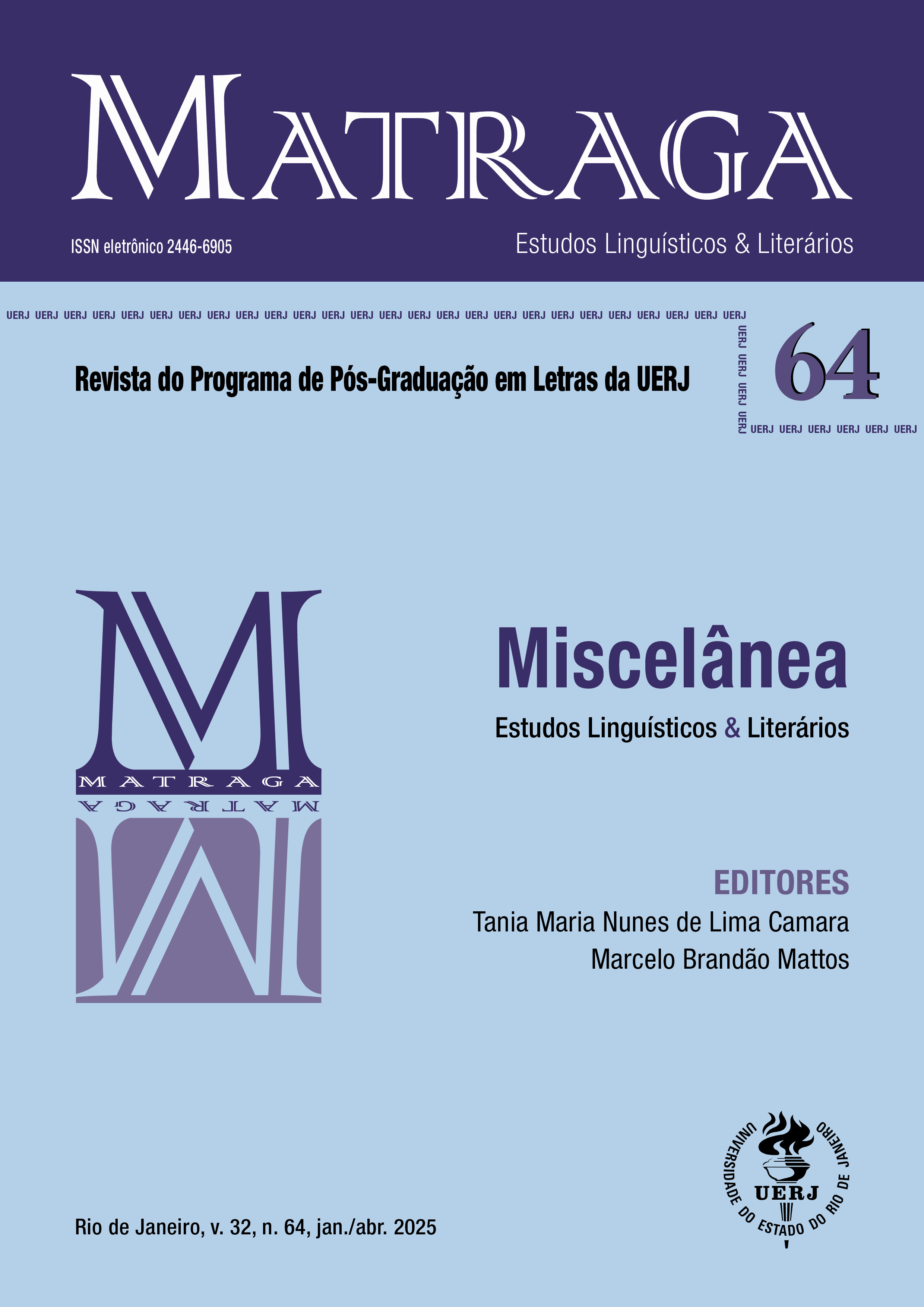Show, don’t tell: considerations about the use of scene and summary in non-fiction narratives
DOI:
https://doi.org/10.12957/matraga.2025.85412Keywords:
Creative writing, Creative nonfiction, literary theory, Literary journalismAbstract
Like other genres of literary prose, studies on the production of creative non-fiction have been built around the premise “show, don’t tell”. Today, seen as a dull and obvious rule in creative writing offices, its foundations are found in theses by writers like Anton Chekhov and theorists like Wayne Booth and David Lodge. Due to its evident efficiency, the technique could not avoid being absorbed and naturalized by non-fiction narratives. Using the considerations of these theorists regarding the scene (to show) and the summary (to tell), among other names such as Stephen Koch, Luiz Antonio de Assis Brasil and Noemi Jaffe, this article intends to reiterate the fact that scene and summary are not antagonists, refuting a common belief that summary should be avoided. Using examples of creative nonfiction writers such as Eliane Brum, Lira Neto, Vanessa Barbara, Gay Talese and Susan Orlean, we intend to demonstrate that both forms have the same qualitative power.
Downloads
References
ASSIS BRASIL, Luiz Antonio de. Escrever ficção: um manual de criação literária. [Colaboração de Luís Ro- berto Amabile]. São Paulo: Companhia das Letras, 2019.
BARBARA, Vanessa. O livro amarelo do terminal. São Paulo: Cosac Naify, 2008.
BOOTH, Wayne. Retórica da ficção. Tradução: Maria Teresa H. Guerreiro. Lisboa: Arcádia, 1980.
BOURDIEU, Pierre. A ilusão biográfica. In: FERREIRA, Marieta de Moraes; AMADO, Janaina; PORTELLI, Alessandro. Usos & abusos da história oral. 8. ed. Rio de Janeiro: Ed. da FGV, 2006. p. 183-191
BRUM, Eliane. A vida que ninguém vê. Porto Alegre: Arquipélago, 2006.
BRUM, Eliane. Meus desacontecimentos: a história da minha vida com as palavras. São Paulo: Leya, 2014.
GUTKIND, Lee. What is creative nonfiction? Disponível em: <https://creativenonfiction.org/what-is-cnf/>. Acesso em: 25/06/2024.
GUTKIND, Lee. The art of creative nonfiction: writing and selling the literature of reality. New York: John Wiley, 1997.
JAMESON, Fredric. O segredinho inconfessável da América. In: Revista Serrote n. 13, Instituto Moreira Salles, 2013.
KOCH, Stephen. Oficina de escritores: um manual para a arte da ficção. Tradução: Marcelo Dias Almada. São Paulo: WMF Martins Fontes, 2008.
LAGE, Nilson. A Reportagem: teoria e técnica e técnica de entrevista e pesquisa jornalística. Rio de Janeiro: Record, 2001.
LEJEUNE, Phillipe. O pacto autobiográfico. Belo Horizonte: Editora UFMG, 2014.
LIMA, Edvaldo Pereira. Páginas ampliadas: o livro-reportagem como extensão do jornalismo e da literatura. Barueri: Manole, 2008.
LODGE, David. A arte da ficção. Tradução: Guilherme da Silva Braga. Porto Alegre: L&PM, 2017.
LOPATE, Phillip. To show and to tell: the craft of literary nonfiction. New York: Free Press, 2013. LUKEMAN, Noah. The first five pages: a writer’s guide to stay out of rejection. New York: Fireside, 2000. MEDINA, Cremilda. A arte de tecer o presente: narrativa e cotidiano. São Paulo: Summus, 2003.
NETO, Lira. Maysa: só numa multidão de amores. São Paulo: Companhia das Letras, 2017.
ORLEAN, Susan. The American man, age ten. In: The bullfighter checks her makeup. New York: Random House, 2002.
PROSE. Para ler como um escritor. Tradução: Maria Luiza X. de A. Borges. Rio de Janeiro: Zahar, 2008. RICOEUR, Paul. A história, a memória, o esquecimento. Campinas: Editora Unicamp, 2018.
TALESE, Gay. Frank Sinatra está resfriado. In: Fama & Anonimato. Tradução: Luciano Vieira Machado. São Paulo: Companhia das Letras, 2004.
TALESE, Gay. Joe Louis: o rei da meia-idade. In: Fama & Anonimato. Tradução: Luciano Vieira Machado. São Paulo: Companhia das Letras, 2004.
TCHEKHOV, Anton. Sem trama nem final: 99 conselhos de escrita. Tradução: Homero Freitas de Andrade. São Paulo: Martins Fontes, 2019.
ZINSSER, William. Como escrever bem. Tradução: Bernardo Ajzenberg. São Paulo: Três Estrelas, 2017.
WOLFE, Tom. Radical chique e o Novo Jornalismo. Tradução: José Rubens Siqueira. São Paulo: Companhia das Letras, 2005.
Downloads
Published
How to Cite
Issue
Section
License

This work is licensed under a Creative Commons Attribution-NonCommercial 4.0 International License.
Authorization
Matraga – Scientific Journal of the Post-graduate Program in Arts and Humanities of UERJ is authorized to publish the article submitted here, if it is accepted for online publication. It is attested that the contribution is original, that it is not being submitted to another publisher for publication, and that this statement is the expression of truth.
The works published in Matraga's virtual space – Scientific Journal of the Post-graduate Program in Arts and Humanities of UERJ will be automatically transferred, and your copyright is reserved to Matraga. Its reproduction, in whole or in part, is conditional on the citation of the authors and the data of the publication.

Matraga uses license Creative Commons - Attribution-Non-Commercial 4.0 International.





